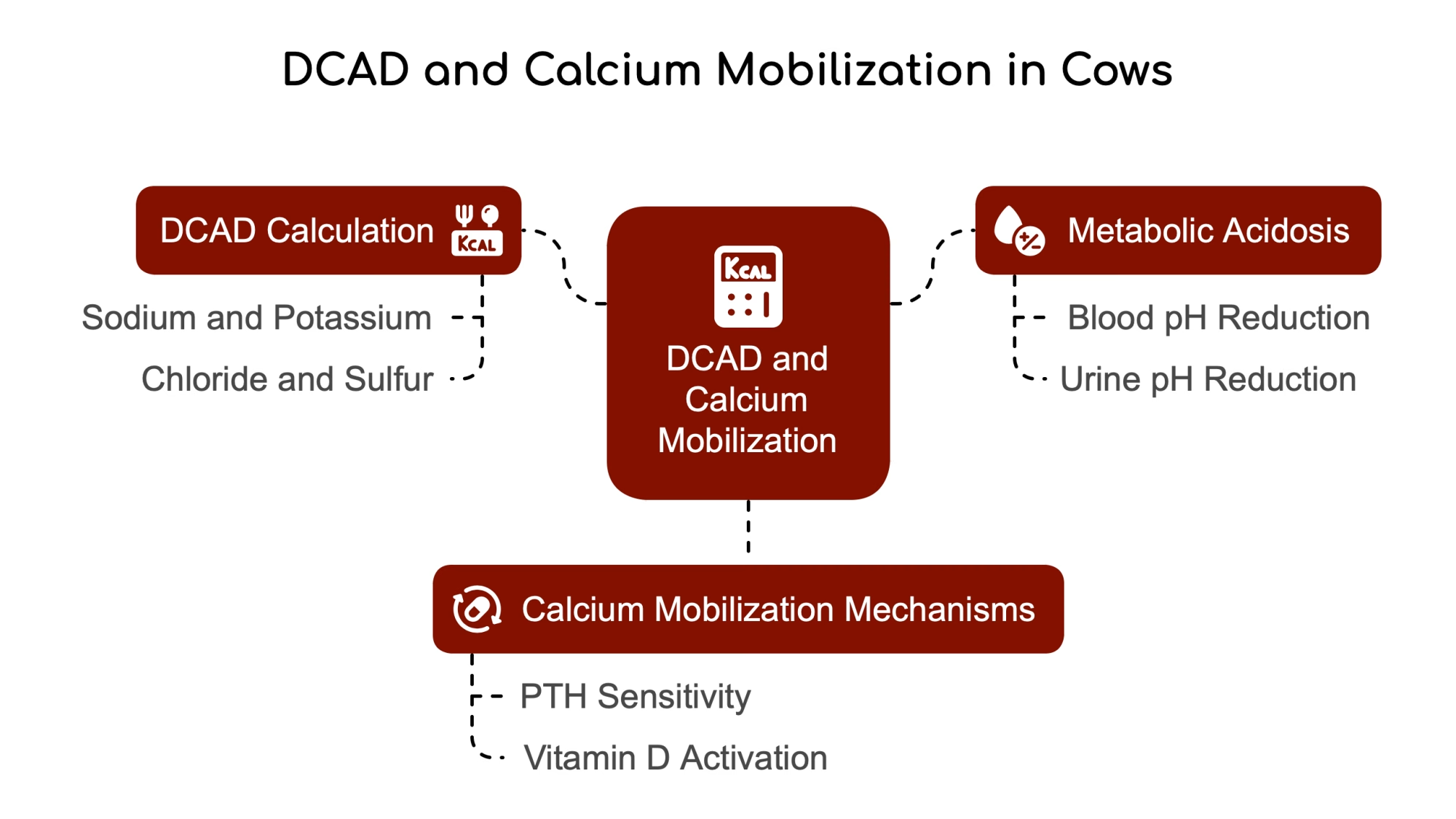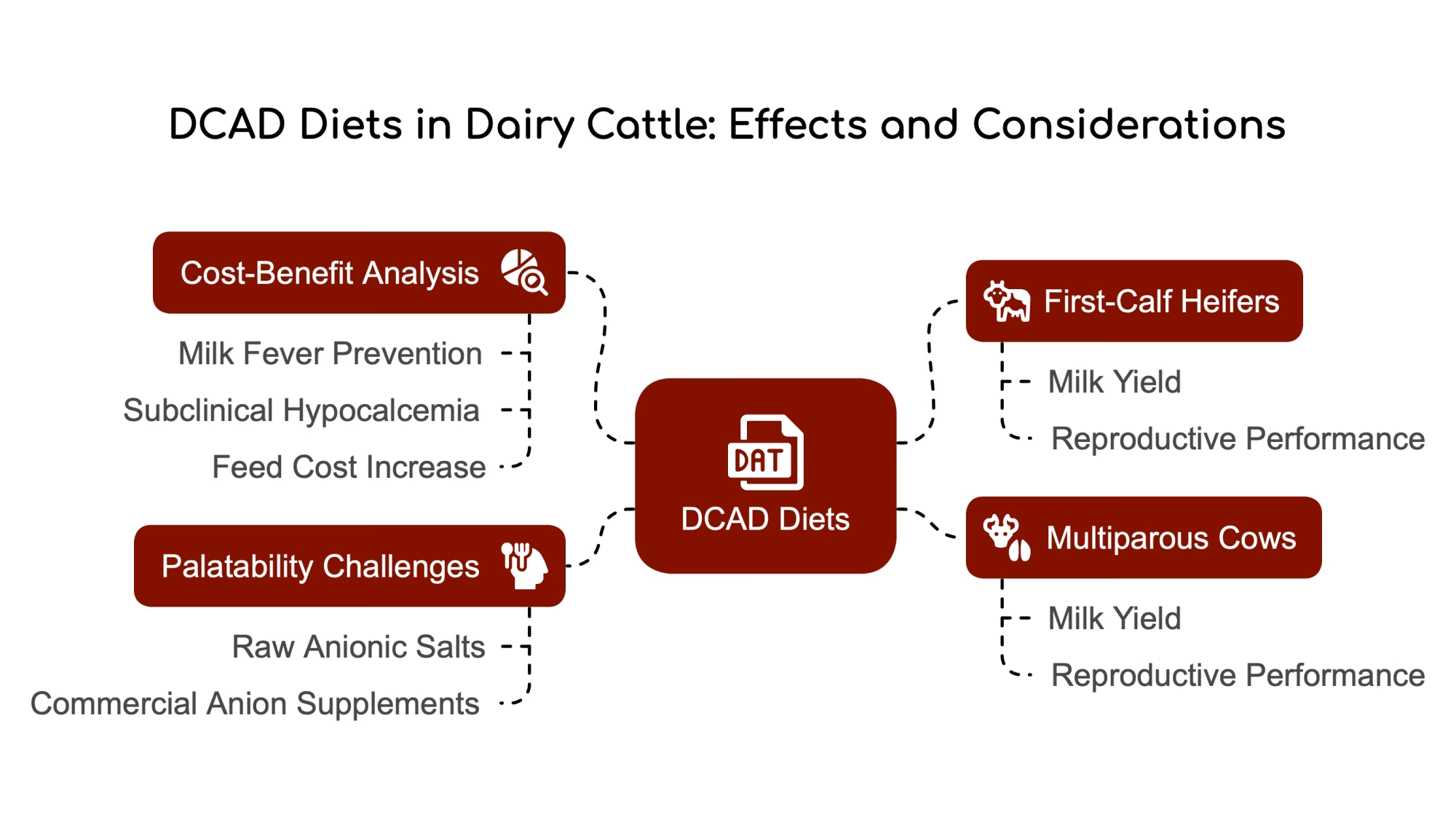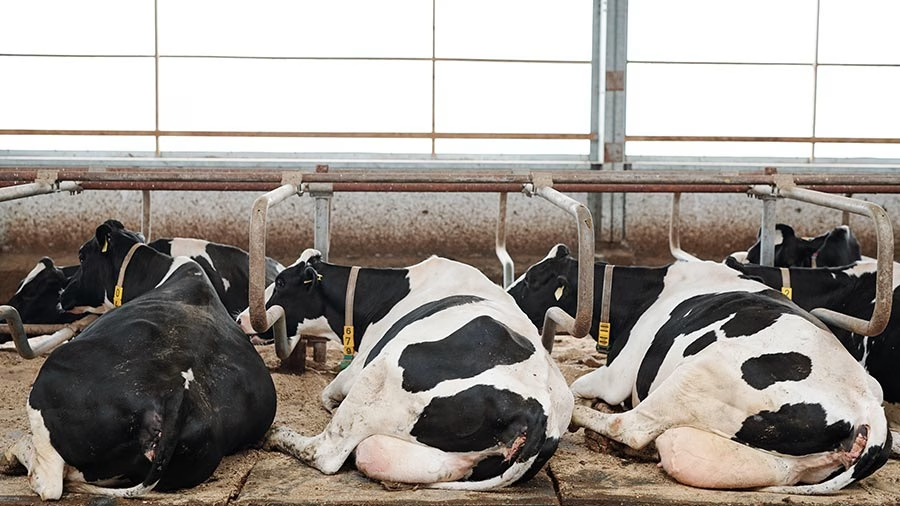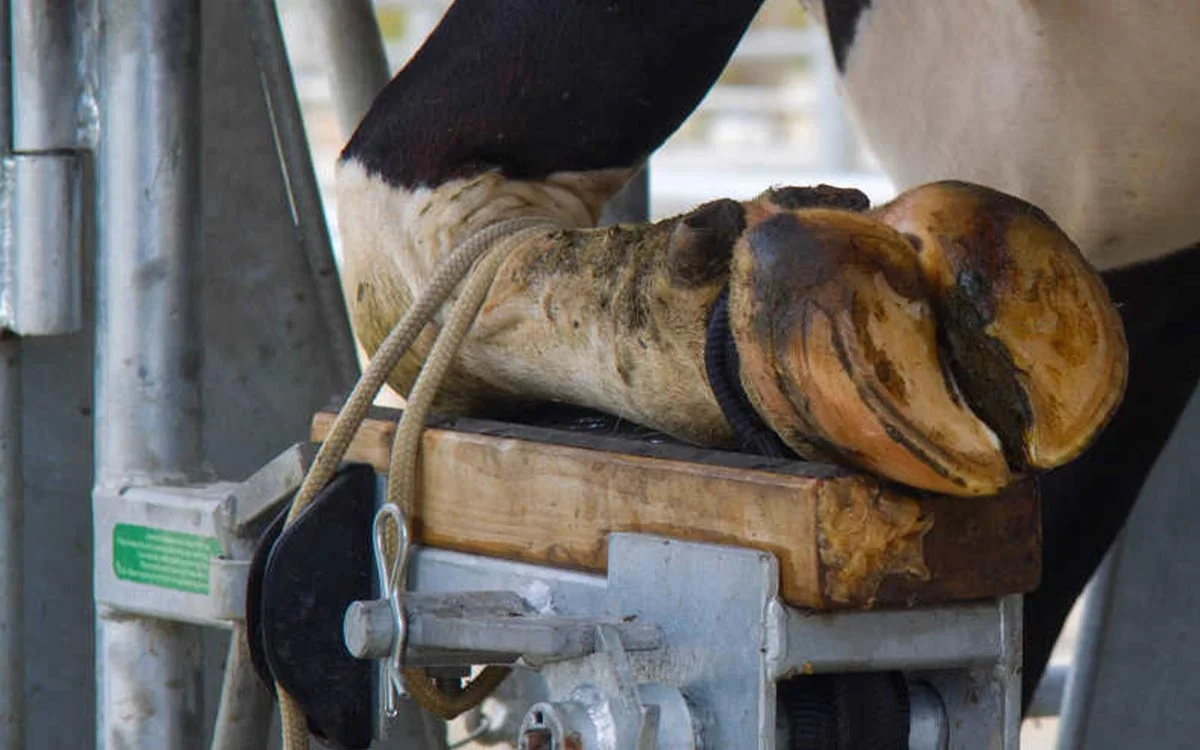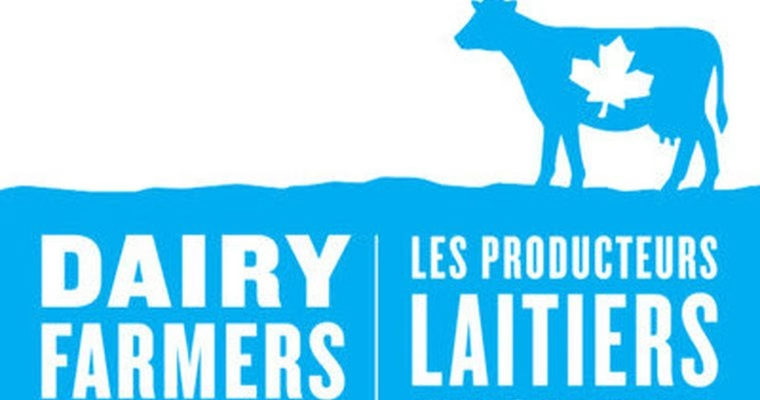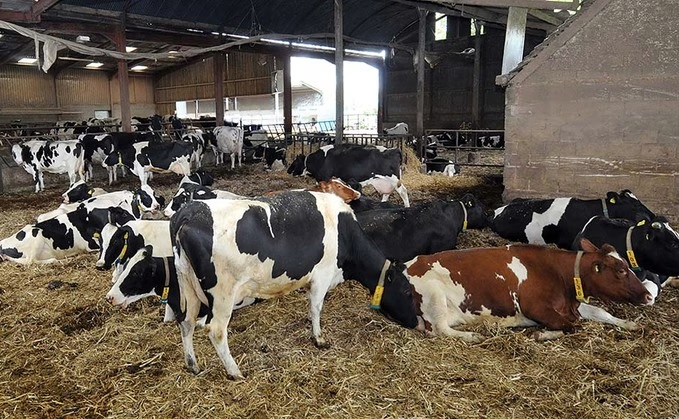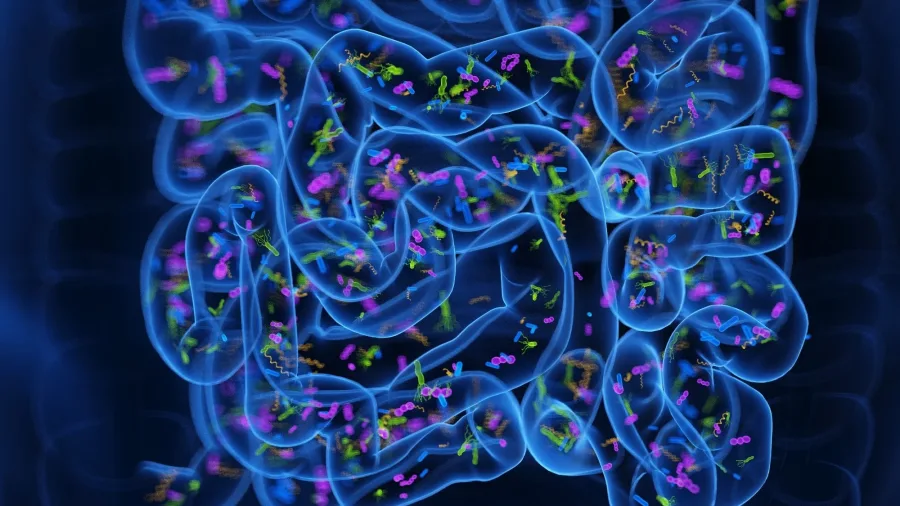Microscopic game-changers boost dairy profits! Smart bacteria slash feed costs, supercharge milk yields, and transform rumen health. Your cows’ tiny allies await.

Dairy farmers face a microscopic revolution, not a battle of barn size or equipment upgrades. Smart bacteria now transform how you approach nutrition, rumen health, and your bottom line. We’ve long obsessed over what to feed cows. The game-changer? Understanding who digests it.
The Microbiology Nutrition Paradigm Shift
For decades, nutritionists zeroed in on ration ingredients. We balanced forages, grains, and supplements with mathematical precision. However, innovative producers now embrace a different approach. Microbiology nutrition shifts your focus from feed to the microorganisms that convert it to milk.
“When I talk about microbiology nutrition, I mean maximizing what specific bacteria do inside your cow’s rumen,” explains Tom Nauman, Dairy Nutrition Manager at The Wenger Group. “Your cow’s digestive system functions as a fermentation vat teeming with trillions of microbes.”
These rumen microbes—bacteria, protozoa, and fungi—break down everything your cows eat. By manipulating this microbial community, you’ll dramatically boost feed efficiency, component yields, and herd health.
What makes this approach so compelling? You can ditch old limitations—no more diluting-rich diets with straws to prevent digestive problems. Your cows can thrive on nutrient-dense feed without the usual digestive disasters.
What Are Smart Bacteria?
Smart bacteria (or “Smartbacteria”) aren’t your average bugs. Scientists select these specialized microorganisms for specific functions in your cow’s gut. Unlike generic probiotics that cast a wide net, these bacteria perform precise metabolic tasks.
“I develop Smart bacteria to fulfill specific functions,” Nauman explains. “They perform particular jobs in the rumen or lower gut to enhance performance and keep animals healthy.”
These specialized bacteria transform your cows’ digestive environment in four key ways:
- They stabilize rumen pH. Smart bacteria maintain optimal acid levels even when cows consume high-carb diets, preventing subacute ruminal acidosis.
- They supercharge fiber digestion. Specialized strains break down complex plant fibers, squeezing more nutrition from every mouthful of forage.
- They optimize protein use. Certain Smart bacteria reshape protein metabolism, cutting ammonia waste and improving nitrogen efficiency.
- They boost immunity. Beyond nutrition, these bacterial allies strengthen gut health and immune response.
Products like Priority IAC’s P-One Program™ deliver specific Smart bacteria strains that efficiently metabolize and transport energy. Ken Nordlund from Priority IAC puts it bluntly: “We’ve identified what matters—keeping rumen pH stable where it belongs. Priority has the organisms that do that heavy lifting.”
The Science Behind Rumen Microbiology
Recent research has revealed how rumen microbes drive dairy performance. You might not see them, but they work overtime inside your cows.
A 2024 NCBI study revealed cows with higher body condition scores host distinctly different rumen microbiomes. These well-conditioned animals showed a greater abundance of specific Firmicutes genera. The study didn’t just count bugs—it connected them to performance.
These higher-condition cows packed more Anaerovibrio, Veillonellaceae_UCG_001, and Ruminococcus_gauvreauii_group. They also harbored more Blautia, Eubacterium, and Prevotellaceae. You can’t see these allies, but they’re separating your top performers from the rest of the herd.
A groundbreaking 2023 Journal of Dairy Science study took this further. Researchers discovered the rumen microbiome contributes up to 26% toward milk energy production in lactating Holsteins. Think about that—over a quarter of your milk check depends on microscopic partners most farmers never consider.
More fascinating still, they found the rumen microbiome mediates part of the cow’s genetic influence on feed efficiency. Your cow’s genome and her microbiome talk to each other, creating a partnership more significant than the sum of its parts.
Managing Rich Diets: A Revolutionary Approach
Smart bacteria shine when your cows consume rich diets high in rapidly fermentable carbs. We used to dilute these diets with straws to prevent digestive train wrecks. Nordlund challenges this conventional wisdom.
“I want you to make your forages as rich as possible,” he insists. With Smart bacteria, your cows thrive on nutritionally dense feeds without the usual digestive fallout. This flips traditional dairy nutrition on its head.
Using Smart bacteria to manage rich diets gives you three significant advantages:
- You’ll maximize forage quality. Focus on producing the highest-quality forages possible. Are you too rich? Not anymore.
- You’ll slash feed costs. Your cows extract more nutrition from every bite, potentially cutting your purchased feed bills dramatically.
- You’ll prevent subclinical acidosis. Smart bacteria maintain rumen pH even when cows consume high-carb diets—no more hidden production losses from SARA.
“By controlling the microbial environment inside the rumen, we fundamentally transform how cows convert feed to milk. This isn’t just tweaking—it’s a new ballgame in dairy nutrition.”
Real-World Success: From Skepticism to Adoption
Don’t just take my word for it. Look at Hilltop Haven Dairy in Moravia, New York. After adding Priority IAC’s P-One™ supplement, their somatic cell count plummeted below 80,000. Their rolling herd average on 2X milking jumped to approximately 20,000 pounds per cow.
The farm credits this blend of lactic and propionic acid-forming bacteria for their dramatic turnaround. They now feed nutrient-dense rations with high NFC carbohydrates built on premium forage. This approach cuts their purchased protein and other expensive additives.
Their experience shows how focusing on rumen health creates a foundation for cow performance and profitability. The proof is in the pudding—or, in this case, the bulk tank.
The Holobiont Effect: A New Way to Understand Cow Performance
You’ve likely never heard of the “holobiont effect,” but it might reshape how you view your herd. Recent Bullvine research introduced this concept—the joint effect of cow genetics and rumen microbes on feed efficiency in Holsteins.
This concept recognizes that your cow’s performance stems from her genes and rumen microbes. These factors don’t just add up—they multiply.
Scientists measure genetic influence through heritability (h²) and microbe influence through improbability (m²). When combined, their joint action creates holobiability (ho²).
Research with 448 mid-lactation Holsteins found something fascinating. Models incorporating both genomic and microbiome effects predicted performance better than genomics alone. The holobiont effect exceeded the sum of direct heritability and improbability. In plain language? Genes and gut bugs work together, creating results you can’t explain with traditional nutrition.
This explains why Smart bacteria interventions often yield results that exceed expectations. We’re not just feeding cows but cultivating microbial partnerships that amplify genetic potential.
Beyond the Rumen: Comprehensive Microbial Solutions
While your cow’s rumen gets the most attention, don’t overlook her lower gut. A 2022 Nature Scientific Reports study connected rumen and lower gut microbiomes to production efficiency in Holsteins.
The researchers discovered critical links between lower gut microbes and feed efficiency, milk production, and component yields. When they combined core microbiomes from both sites, they explained much more variation in feed intake than either location alone.
This means comprehensive microbial strategies that target multiple digestive sites could deliver even more significant improvements. If you focus solely on the rumen, you leave money on the table.
Budgeting for Microbiology Nutrition
Let’s talk dollars and cents. Smart bacteria supplements typically cost between $0.15 and $0.30 per cow daily. But don’t let that figure throw you. Your return comes from multiple areas:
- Feed efficiency jumps by 3-8%. This saves you $0.25-$0.50 per cow daily in feed costs.
- Component yields increase by 0.1-0.3 percentage points. This boosts your milk check directly.
- Health costs drop substantially. Fewer cases of subclinical acidosis mean less treatment and labor expenses.
- Cows last longer in your herd. Stable rumen environments reduce metabolic issues, extending productive lifespans.
Most farms see positive ROI within 60-90 days. Full benefits emerge after 4-6 months as the rumen microbiome stabilizes under the new feeding protocol. The initial investment might make you hesitate, but the returns will make you smile at the bank.
Implementation Strategies for Progressive Producers
Ready to bring Smart bacteria into your nutrition program? You’ll need a methodical approach. Start by identifying your farm’s specific challenges and setting clear goals.
Key Steps for Implementation
- Assess your current situation. To establish a baseline, evaluate your feeding practices, forage quality, cow performance, and health indicators.
- Set concrete goals. Define specific objectives for milk production, components, feed efficiency, or health metrics.
- Educate your team. Everyone needs to understand the concepts, benefits, and monitoring procedures.
- Introduce products gradually. Add Smart bacteria according to manufacturer recommendations, typically as daily TMR additions.
- Monitor relentlessly. Track key performance indicators to measure effectiveness and make necessary adjustments.
Implementation Considerations By Herd Size
Small Herds (Under 100 cows):
- Consider how you’ll deliver supplements (top-dress vs. TMR incorporation)
- Focus first on high-value groups like fresh cows and top producers
- Evaluate ROI based on component improvements and health metrics
Medium Herds (100-500 cows):
- Ensure you mix products consistently in TMR
- Consider implementing by production groups
- Track both production and health metrics meticulously
Large Herds (500+ cows):
- Implement strict protocol compliance systems
- Roll out pen-by-pen to establish precise control comparisons
- Develop comprehensive tracking for multiple metrics
Comparing Traditional vs. Microbiology Nutrition Approaches
| Aspect | Traditional Nutrition | Microbiology Nutrition |
| Your Focus | Feed ingredients and nutrient levels | Rumen microbial population and function |
| Handling Rich Diets | You dilute with straw or hay | You optimize microbial population |
| Preventing Acidosis | You limit fast-fermenting carbs | You use Smart bacteria to control pH |
| Protein Strategy | You buy more expensive supplements | You produce more microbial protein in-house |
| Feed Efficiency | You see modest gains through ingredients | You achieve major gains through better fermentation |
| Environmental Impact | You generate more nitrogen waste | You reduce excretion through improved utilization |
| Implementation | Easy to start but limited upside | More complex but higher potential returns |
| Scientific Basis | You rely on nutrient requirement research | You leverage genome-microbiome interaction science |
| Feed Costs | You focus on input costs | You prioritize conversion efficiency |
| Genetic Interaction | You consider genetics separately | You harness the holobiont effect |
The Future of Microbiology Nutrition in Dairy
Science continues to uncover fascinating relationships between cow genetics, rumen microbes, and performance. Recent studies identified regions where the genome co-localizes with rumen microbes and feed efficiency. Researchers found three distinct network patterns:
- Cow genes directly affect both rumen microbes and feed efficiency
- Cow genes indirectly influence feed efficiency through microbial populations
- Cow genes and rumen microbes independently impact feed efficiency
These discoveries point to several exciting future developments:
- You’ll see precision microbial solutions. The research will identify targeted bacterial strains for specific production challenges on your farm.
- You’ll combine microbes with genetics. Future programs will create customized bacterial supplements based on your herd’s genetic profile.
- You’ll reduce environmental impact. Better feed efficiency through microbiology nutrition will shrink your farm’s carbon footprint.
- You’ll use on-farm diagnostics. New tools will let you monitor rumen microbial populations in real time, allowing you to fine-tune nutrition instantly.
Research shows cow genetics moderately influence feed efficiency (heritability of 0.16-0.20) and exert low to moderate control over rumen microbes (heritability of 0.10-0.40). These findings highlight your herd’s vast potential for combined genomic and microbial approaches.
Troubleshooting Common Implementation Challenges
You might hit some bumps when you implement Smart bacteria strategies. Here’s how to smooth them out:
Problem: Your TMR mixing seems inconsistent
- Solution: Tighten your mixing protocols. Consider premixing Smart bacteria with a carrier ingredient. Verify distribution throughout your ration.
Problem: You’re struggling with transition periods
- Solution: Maintain consistent Smart bacteria levels across all lactation phases. Adjust your base ration components, but keep the microbial support steady during transitions.
Problem: You wonder about supplement compatibility
- Solution: Review all feed additives for potential conflicts. Most Smart bacteria work well with common supplements, but some ionophores and antimicrobials might require adjustment.
Problem: Your cows respond differently
- Solution: Monitor individual responses and consider genetic factors. The holobiont effect means some cows will respond more dramatically based on their genetics.
Problem: You notice seasonal performance swings
- Solution: Adjust your base ratio seasonally while maintaining consistent Smart bacteria supplementation. This provides stability to the rumen despite external changes.
Why This Matters for Your Operation
Microbiology nutrition isn’t just academic—it directly impacts your milk check. By optimizing rumen function through Smart bacteria, you’ll:
- Cut feed costs significantly. Better feed efficiency means more milk from less feed.
- Boost milk components dramatically. Optimized fermentation improves butterfat and protein levels.
- Keep your cows healthier. Stable rumen pH reduces metabolic disorders.
- Extend cow longevity. Healthier cows stay productive longer, reducing replacement costs.
- Shrink your environmental footprint. Better nutrient utilization means less waste.
With persistent margin pressure, milk price volatility, and environmental scrutiny, these benefits give you a serious competitive edge. This approach doesn’t just help you survive—it enables you to thrive.
“The rumen microbiome can change the total heritability of feed efficiency traits through a mediated genetic effect. The change depends on how microbes affect feed efficiency and the genetic correlations between microbes and observed traits.”
The Bottom Line
Smart bacteria revolutionize dairy nutrition by prioritizing rumen health as the foundation for cow performance and farm profitability. They enhance digestive processes, helping you maximize high-quality feeds while preventing digestive problems.
Science shows that the rumen microbiome contributes up to 26% toward milk energy in lactating Holsteins. The holobiont effect—where genome and microbiome interaction exceeds their contributions—explains why many farmers see such impressive results with microbiology nutrition.
As you face pressure to improve efficiency, sustainability, and animal welfare, microbiology nutrition offers a clear path forward. By partnering with your cows’ natural digestive ecosystem instead of fighting it, you’ll boost feed efficiency, milk production, and herd health.
Smart bacteria science continues to evolve, but research consistently proves these approaches transform dairy nutrition. Forward-thinking producers who embrace these concepts will lead the industry—creating a future where cows produce more efficiently, stay healthier, and deliver better returns.
The most successful dairy farms tomorrow won’t necessarily be the biggest—they’ll be the ones that harness the microscopic workforce inside every cow. The Smart bacteria revolution isn’t coming—it’s already here. The only question: Will you lead the charge or play catch-up?
Taking Action: Next Steps for Progressive Producers
Ready to explore how microbiology nutrition could transform your operation? Take these steps:
- Talk to a nutrition advisor who understands microbiology nutrition concepts and products.
- Track feed efficiency, components, and health indicators to measure your performance.
- Start small with a test group to evaluate before full implementation.
- Invest in premium forage quality to maximize benefits from improved rumen function.
- Monitor results obsessively using both production data and health indicators.
Smart bacteria represent one of the most promising frontiers in dairy production. By partnering with these microscopic allies, you’ll achieve new efficiency, profitability, and sustainability levels—positioning your farm for success in an increasingly competitive landscape. Don’t just keep up with the Joneses—leave them in the dust.
Key Takeaways:
- Rumen microbes drive 26% of milk energy: Science confirms microbiome management directly impacts your milk check.
- ROI in 90 days: Feed efficiency gains (3-8%) and component bumps (0.1-0.3%) quickly offset supplement costs.
- Case studies don’t lie: Farms cut SCC to <80,000 and hit 20,000-lb herd averages using Smart bacteria.
- It’s in their DNA: The “holobiont effect” means genes + microbes = more significant gains than alone.
- Sustainability win: Less nitrogen waste and healthier cows = smaller environmental hoofprint.
Executive Summary:
Microbiology nutrition revolutionizes dairy farming by leveraging targeted “Smart bacteria” to optimize rumen function and feed efficiency. Recent studies prove these microorganisms can boost milk energy production by up to 26% while reducing feed costs and metabolic disorders. By stabilizing pH in high-starch diets and enhancing nutrient absorption, farmers can maximize forage quality without sacrificing cow health. Real-world adopters report higher component yields, lower somatic cell counts, and ROI within 60-90 days. With science validating the “holobiont effect”—where genetics and microbiome synergy amplify results—progressive producers embrace microbial strategies to future-proof their operations against rising input costs and sustainability pressures.
 Join the Revolution!
Join the Revolution!
Join over 30,000 successful dairy professionals who rely on Bullvine Weekly for their competitive edge. Delivered directly to your inbox each week, our exclusive industry insights help you make smarter decisions while saving precious hours every week. Never miss critical updates on milk production trends, breakthrough technologies, and profit-boosting strategies that top producers are already implementing. Subscribe now to transform your dairy operation’s efficiency and profitability—your future success is just one click away.







 Join the Revolution!
Join the Revolution!






